-
Posts
1,262 -
Joined
-
Last visited
Content Type
Profiles
Forums
Articles
Gallery
Downloads
Events
Posts posted by basher
-
-
I would contact Norton they seem to cater to making these things.
-
well it is traditional to bed Sheffield cutlers anvils into their stone stands with horse droppings!
I personally am not at all bothered as to what the rebound of an anvil is like , I have never carried a ballbearing , and much prefer quieter ones to ringers. but each to their own.
-
these clutches certainly need oil, but not very much. I found that adding a drop to the top of the inner cone every day i used it seem'd to work very well much more and it just span less and it would over grip. also worth checking that the clutch engagement ring isnt too worn if its very sloppy it may not pull the outer cone back easily.
-
a 9" grinder is one of the most essential tools of the forge! with thin cutting disks for stainless steel they are quite amazing and can do fine work if you are used to using them.
-
there are numerous things you may be aiming for when you etch , contrast depth of etch and an element of "matting" from acidic action. I dont hot blue stuff but do do very similar stuff with coffee and tea (hot) and prefer the results I get after a deep etch. etch first in vinegar to get depth , then ferric cor some kind of conteast and a little more depth and the the boiling tea/coffee for deep darkening a light pass over with 6000 grit to clean up the high spots.
-
On 4/21/2020 at 8:26 PM, ThomasPowers said:
Basher; do you notice the difference between using a 100# anvil and say a 400# anvil?
I can feel the diferences between my smallest anvils (150 or so) and a 200 especially when working off center on the anvil , 200 and up not at all , i have a good range all the way up to 900lb..... all this with a hand hammer of course. I have anvils I prefer but that is basically more to do with face geometry , the way the edges are ground etc. I regularly (pre lock down!!!) use 12 different anvils whilst teaching classes and am happy with any of them.
I am however very partial to a beautiful anvil!!!
There is a lot of stuff written about the ring and rebound of an anvil being all important and the ring is a huge pain in the ear and rebound is of little or no importance to me in my work.
-
I have found rebound and anvil hardness to be irrelevant when it comes to results from forging hot material. I have many anvils of many construction and lots of diferent hardnesses .all forge well. I can feel no difference between them when working hot steel. I would happily forge hot steel on a large block of mild steel.
hardness will play a factor with regards to the anvil or hammer denting with missed hits and the longevity of the anvil if used in an industrial way.
and people like something they can measure.....
-
if you are hand welding just using Karosene and no borax that could be your problem. no problem with the technique at all but just that it does not really lend its self to welding with a hand hammer. If you are welding in a reducing forge or using Karosene then the problem you get is that as soon as the billet comes out of the fire it is being oxidised at the edges in the air. when you are welding with a power hammer or press its not really a problem because the whole billet can be shut before the oxidisation causes a problem. I would recommend using borax when hand welding as you are only really able to forge weld a couple of square inches of billet at a time. I would also repeat every pass at least twice .
In my work I mainly weld using a reducing atmosphere forge but also weld up by hand with borax and use quite a few other methods (seam welding before forge welding and even the good old hot cat and fold with borax from time to time.
-
My latest sword a patternwelded single edged viking with patternwelded fittings. hope you like it. stay safe out there.



-
On 3/9/2020 at 9:34 PM, ThomasPowers said:
That one's worth running out and buying a lottery ticket for! Details on the blade please.
thanks for all the kind comments. the blade is a simple san mai construction of bell-clapper wrought iron over 1095 core.
-
“Far over the misty mountains cold, To dungeons deep and caverns old, We must away, Ere break of day, To claim our long forgotten Gold
The latest Seax by Myself and Petr Florianek... My blade but Petr has surpassed himself with the blade carving , handle and sheath ...My fave to date. hope you like it.
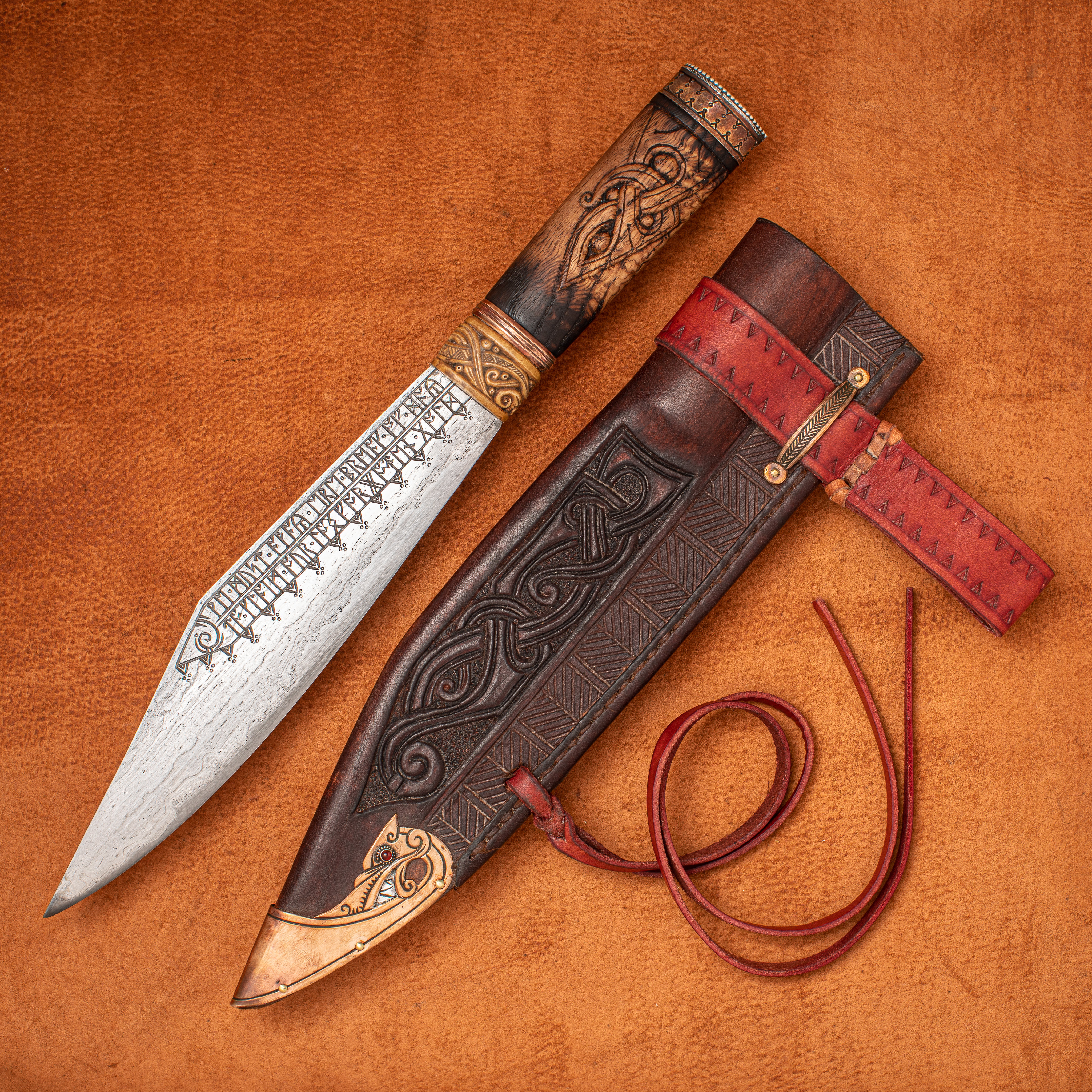
 [
[
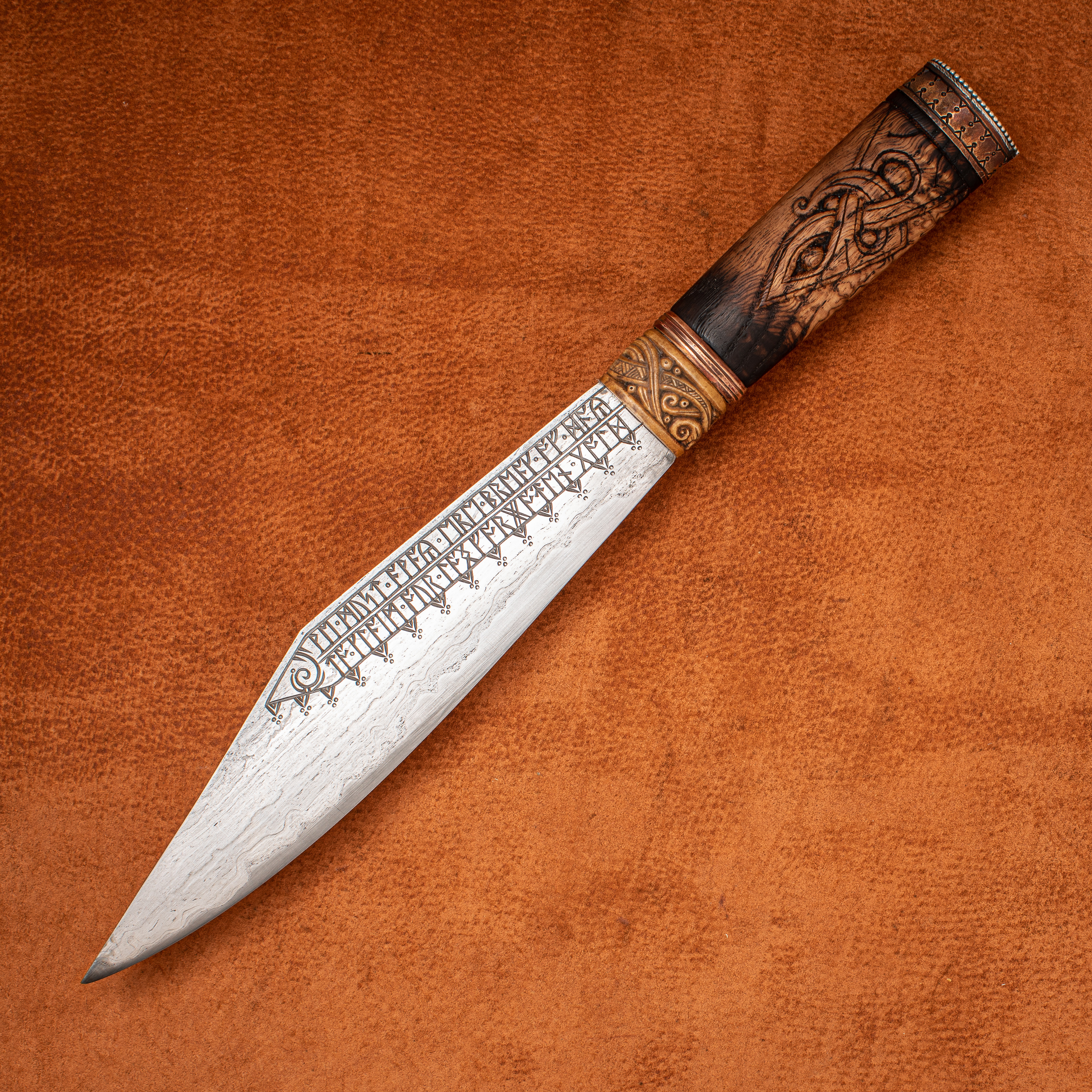



-
I weld up billets, use collers for wrap around swords where I want the edge material to be able to slide along the core as it stretches instaed of bunching up and somtimes use wire wrapping or shaped tongs. use whatever you have that works for you.
-
yes they are slagg inclusions , part of using that material. its not perfect and is in fact big ones are the main cause of failed blades for me... I accept small ones a part of the charm of the material as it is part of the material.
-
On 2/25/2020 at 8:41 PM, Les L said:
That is amazing! great job on the blade and handle. Please describe the different layers and patterns in the blade,
hi les,
the blade is made from 5 bars of metal. wrought iron at the spine then 2 twists made from 7 layers of steel one twisted clockwise one anticlockwise . Then another layer of wrought iron and random pattern of about 240 layers at the edge.
cheers for the kind commen ts all.
-
This is lhe latest colaberation knife made by myself and Czech bladesmith Petr Florianek. Inspired by saxon swords the 11" blade and handle are made by me and the carving and Sterling silver handle ornamentation is by Petr.
Hope you like it.

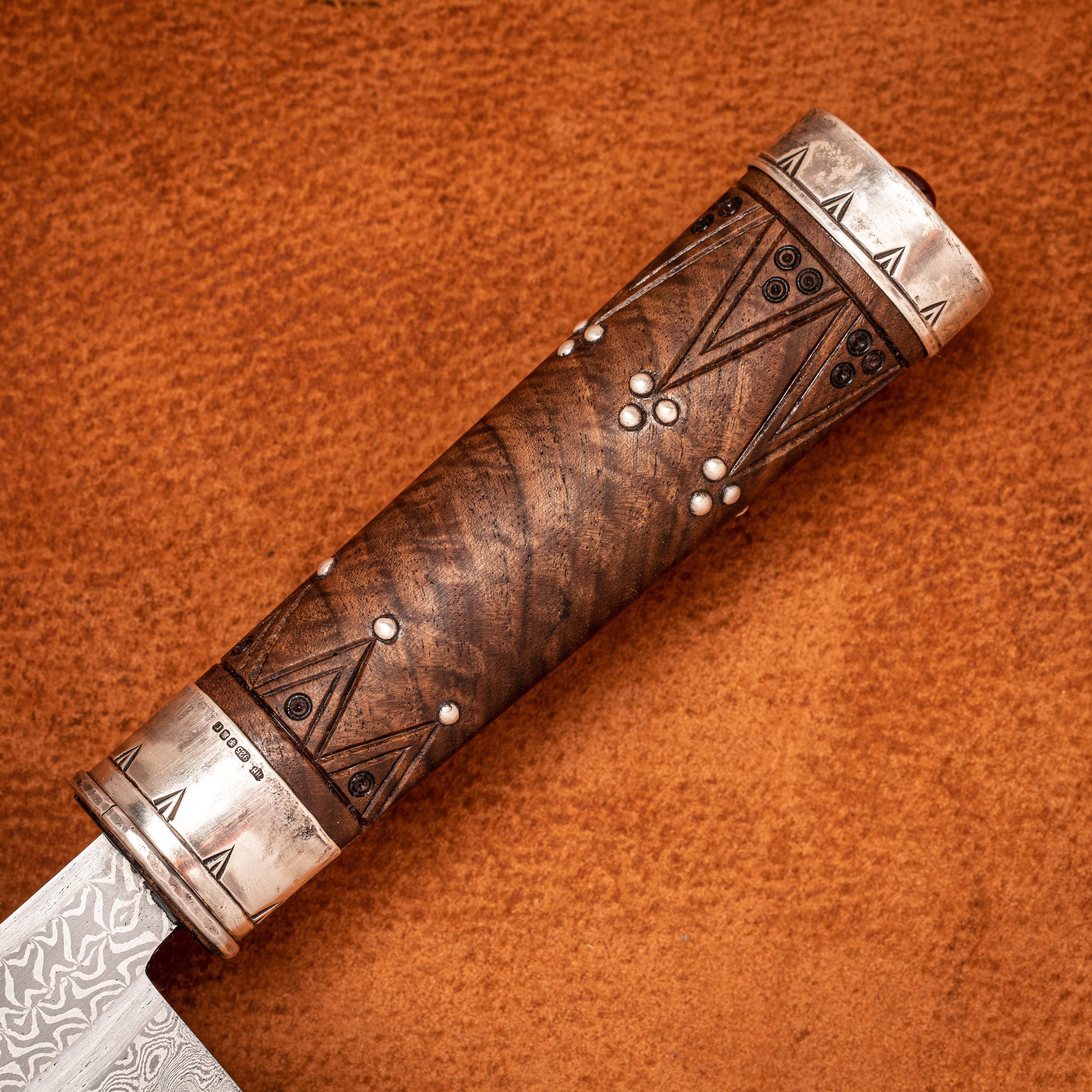
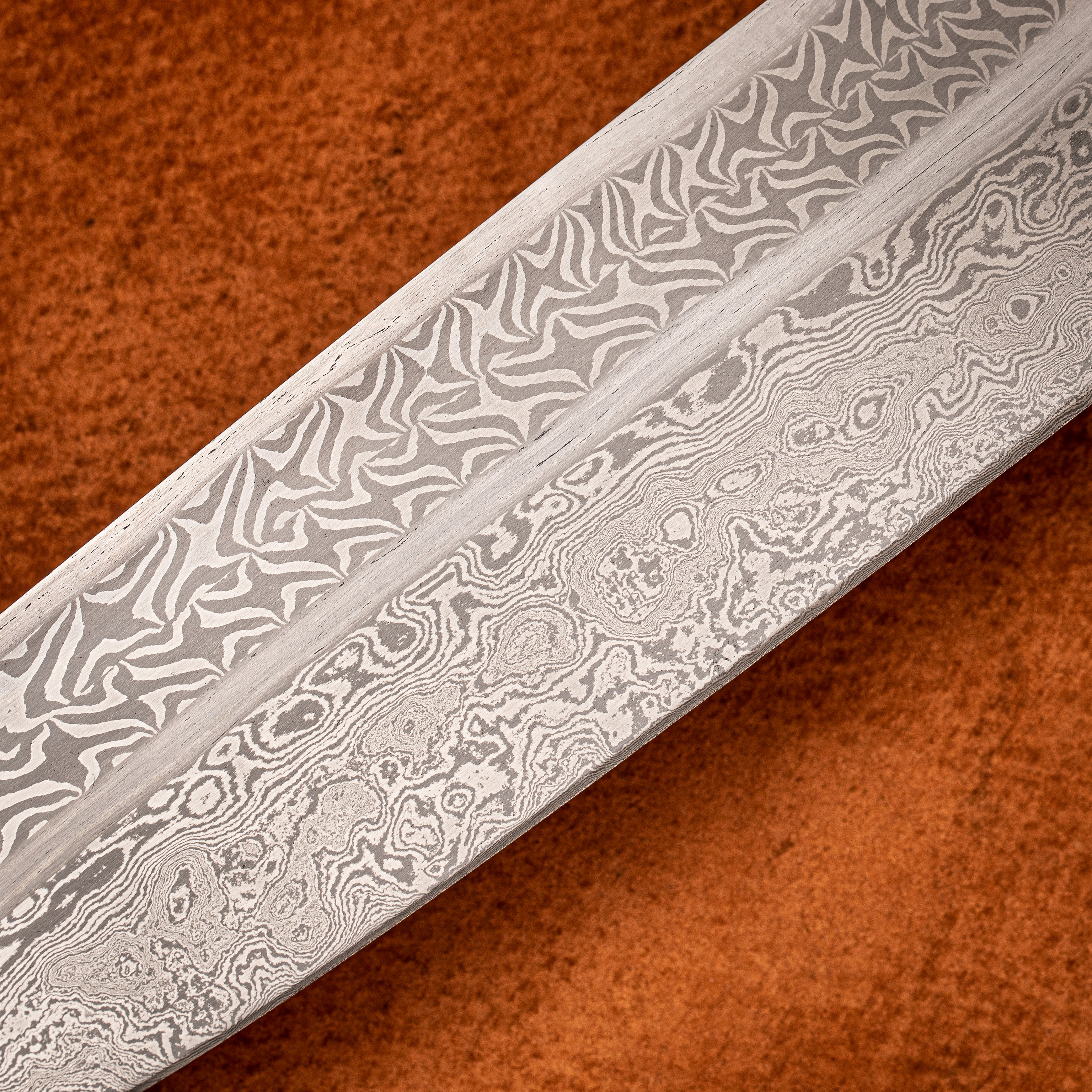
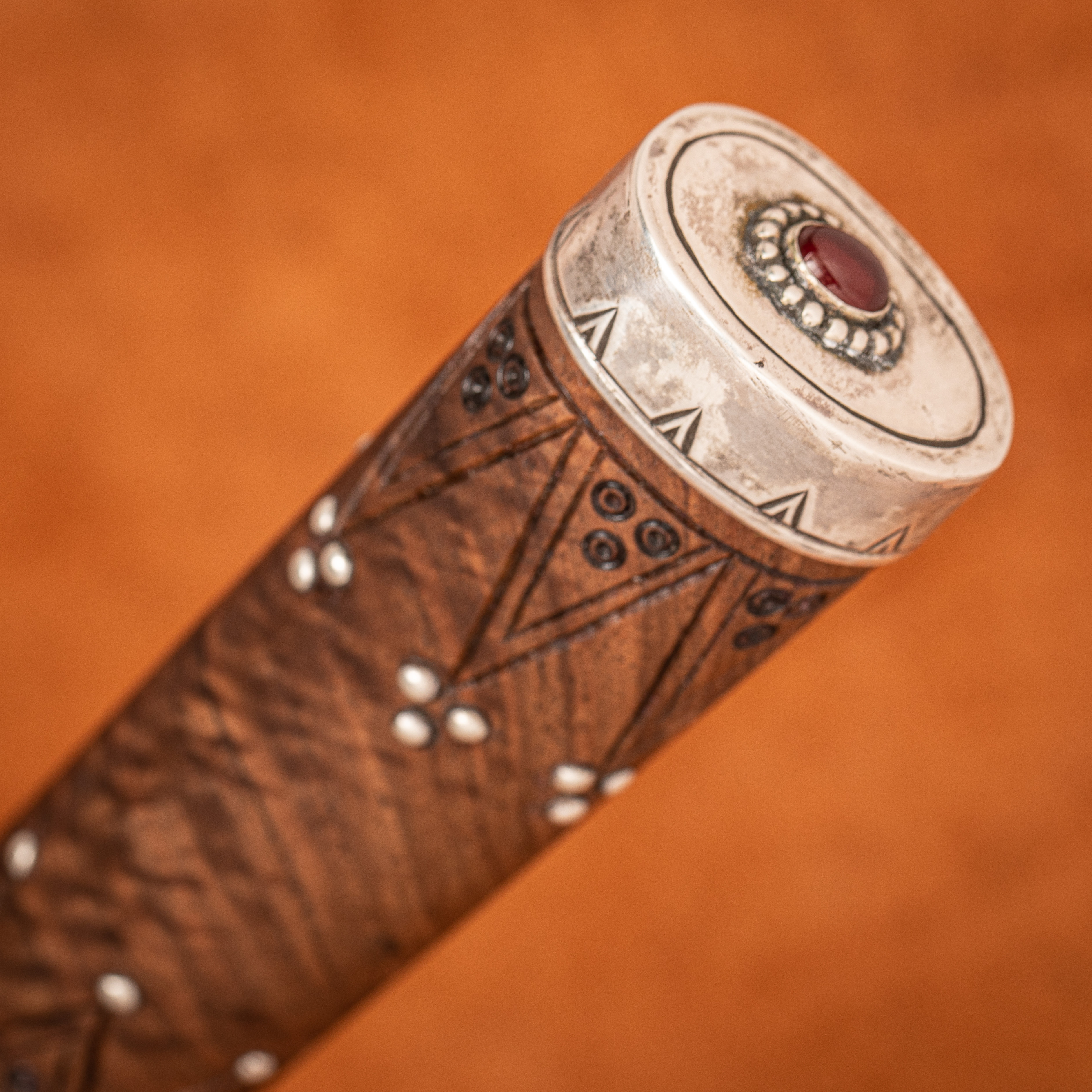
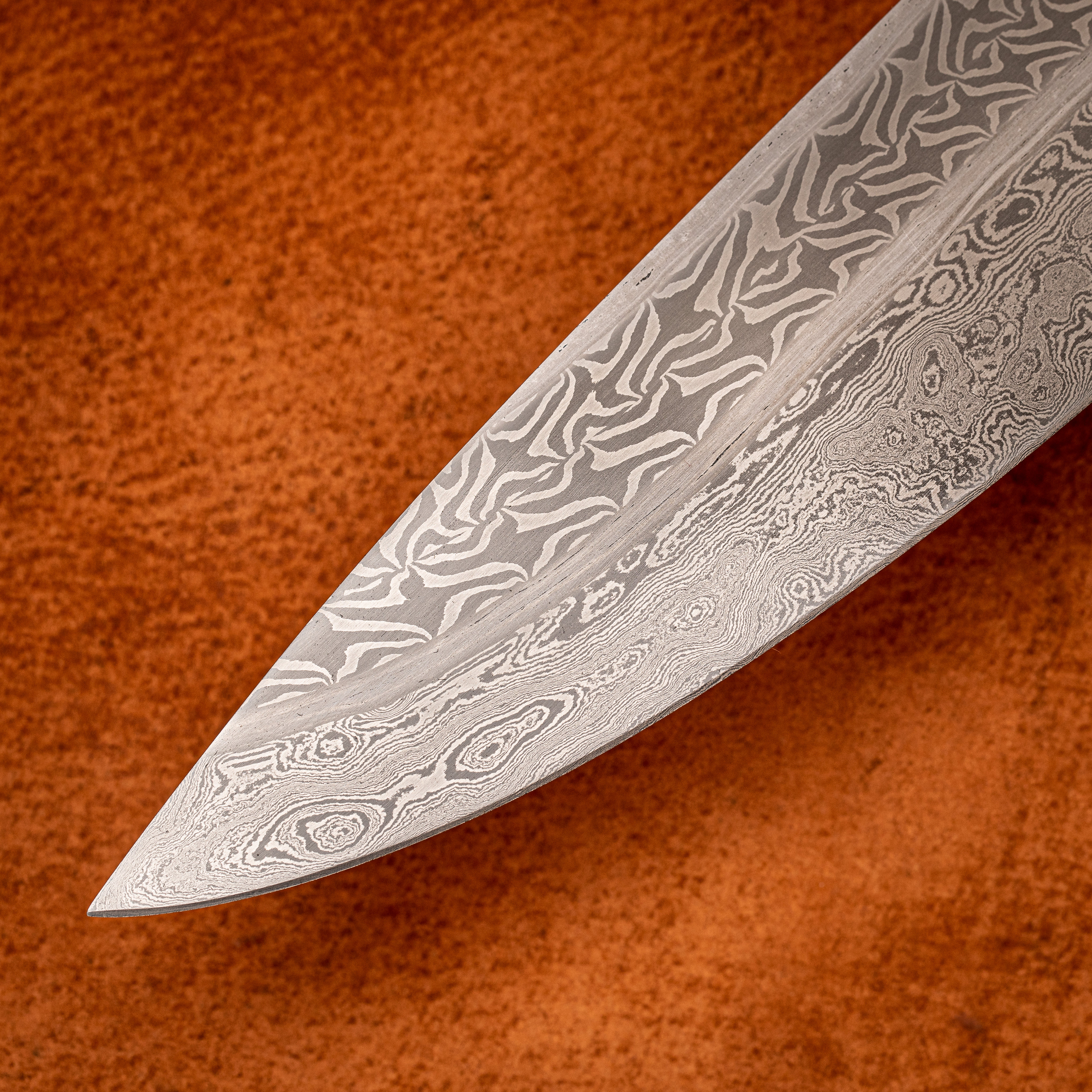
-
you will have to be on it they don't come up often and go quick . I would join the British artist blacksmiths facebook page , look at ebay every day gumtree too and facebook marketplace.. hammers do not hang around the last sahinler I bought I speed typed "I'll have it if its in good working order and will pay imediatly" and the seller had over 10 more inquiries in the next 10 minutes . If you umm and err then someone else will own it. I would recommend you look at anyang forging hammers in the Uk sold by Massey forging. ill send you a message with John nicolsons contact details for massey anyang.
-
could you please explain how a tong help punch is safer than the hafted punch?
-
If you really want to go down this route have a look at "trip hammers" in reality. they are mostly big and heavy (many hundred pounds in the head) and running from a drive with huge inertia being powered by water.
There are much better ways of harnessing a limited Hp and a guided helve spring hammer or tyre hammer would be able to utilise the limited power much more efficiently.
the DaVincy hammer is elegant looking , but one has to ask ones self why it was never used during the period when similar technology was in use for almost a thousand years . I am thinking that having a slower moving larger radius with pegs was better as far as friction is concerned and that the seemingly elegant continuous lift of the DaVinci hammer has no real world advantage.
I have found it worth my while to take the time and find an actual working model to copy when trying to make complex workshop tools ...even traveling across the atlatic when needed to see rolling mills and presses. saves wasted time space and money in the long run. unless what you want does not exist...then you will have to make it up!
-
my current forge anvil along with a swage block is on 4 castors no problem at all. not even locking castors....but its a reasonably big anvil and a swage block so has a lot of inertia.
-
yes thats the one I had ...
here is the one I was talking about though..

so definatly a kingshorne.
-
I believe its an early kingshorne hammer. made in todmorden , Uk made. I had a slightly different version of it a 90lb which is now in sweden . they get around a lot went to Australia.
I think one of my students has the same hammer, i'll try and get him to chime in.
-
I have run a few of my hammers at different speeds through a VFD , and you can most certainly get much finer control from a little slowing down of the hammer or indeed sometimes a little more power from very little speeding it up! I found that on the hammers I tried there was a sweet spot for power and a different slower one for best control.
I don't know how your oiler works (vacuum?) but I would monitor the oil consumption and check you are getting a film of oil to the front ram.
I have just purchases a VFD for my sahinler 110lb hammer to do just the same thing.
-
yes is to the question:-
"is it possible for the secondary bevel to create drag or hinder the cut in any way"
definite yes!
-
yes is the answer . the smoother the transition the easier the blade will pass through material.

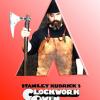
Lets see the swords that you have made.....
in Swordsmithing
Posted
Marius, some nice sword there.